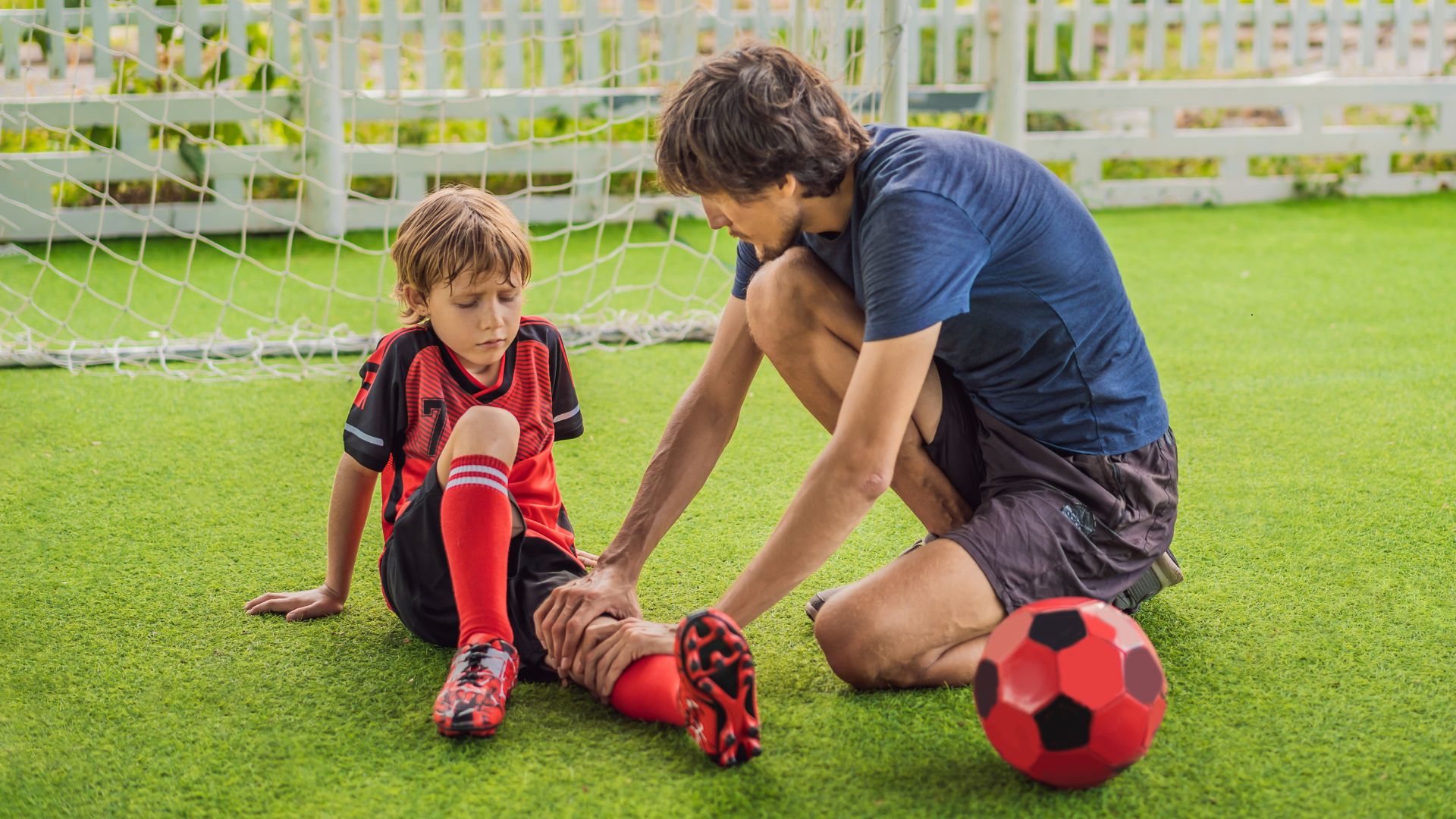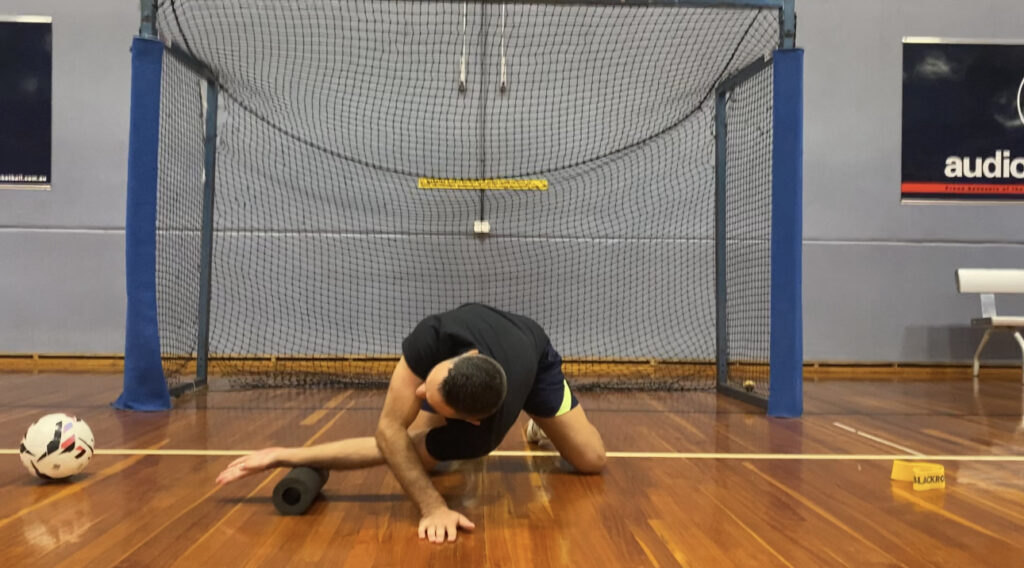How Joint Stability Training Prevents Injuries in Young Football Players

In youth football, the excitement of competition often overshadows an important reality—injuries are common. Research shows up to 30% of young athletes experience sports injuries each year, with lower extremity injuries such as knee injuries, ankle sprains, and shoulder instability among the most frequent. For growing bodies, these setbacks can limit development, delay progress, and reduce long-term participation.
That’s why injury prevention is just as crucial as skill development. A structured injury prevention program can make all the difference, and joint stability training plays a crucial role in reducing risk while enhancing performance.
What is Joint Stability Training?
Joint stability is the ability of muscles, ligaments, and tendons to support a joint through its full range of motion without excessive movement or lower extremity injuries.
Think of joint stability like shock absorbers in a car—without them, every bump becomes a risk for lower limb injuries . For youth soccer players, stable joints allow safe cutting, sprinting, and tackling.
Key Components of Joint Stability
- Balance – Balance training teaches players to achieve enhanced balance and remain steady during rapid changes in direction.
- Proprioception – This refers to proprioception and body awareness—knowing where your limbs are in space even without looking.
- Muscle Control – Effective stability comes from muscle strength and muscles activating at the right time to protect vulnerable joints.
Common Injuries in Young Football Players

- Ankle Sprains – Frequent in sudden stops or changes in direction.
- Knee Injuries – Knee Injuries include meniscus tears and ligament strains, often from awkward landings in adolescent male football players.
- ACL Injuries – ACL tears, especially in adolescence, can disrupt long-term athletic performance as indicated by a cluster randomised controlled trial .
- Shoulder Instability – Shoulder Instability can arise from tackles, falls, repetitive overhead movements, and insufficient dynamic stretches.
How Joint Stability Training Prevents Injuries
Reducing Injury Risk Factors
By reinforcing training routines and strengthening stabilising muscles, stability training lowers injury risk factors.
Enhancing Neuromuscular Control
Improved neuromuscular control, similar to that seen in elite male basketball players, sharpens reaction times, reducing injury incidence.
Preventing Overuse Injuries
Better stability minimises strain on joints, helping avoid overuse injuries.
Supporting Movement Efficiency
Stability enhances technique, reducing fatigue and lowering sports related injuries.
Evidence Behind Stability Training
Research Insights – A systematic review and meta-analysis of injury prevention programs shows consistent benefits across youth sports.
Cluster Randomised Controlled Trial Data – Studies comparing experimental and control groups confirm reductions in lower limb injuries and particularly ACL injuries.
Core Stability and Football
Defining core stability is an important step in understanding how young football players can prevent injuries and perform at their best. Core stability refers to the ability of the trunk muscles—including the abdominals, obliques, spinal stabilisers, and deep pelvic muscles—to support posture and movement during both static positions and dynamic actions. A strong and stable core allows the body to maintain alignment when sprinting, twisting, tackling, or landing from a jump, all of which are frequent demands in football. Without adequate stability, other joints such as the knees, hips, and lower back are forced to absorb more stress, increasing the likelihood of sports-related injuries.
Core stability training provides athletes with structured exercises designed to activate and strengthen these crucial muscles. Classic movements like planks, side planks, bird-dogs, and bridges form the backbone of these programs, while more advanced progressions such as stability ball rollouts or medicine ball throws can be introduced as players mature. The goal is not only strength but also endurance and neuromuscular control of the trunk. The benefits of core stability extend beyond strength alone; improved stability enhances functional performance, allowing for smoother, more efficient movements, while also reducing stress on the knee joint and lower body, directly supporting injury prevention.
Joint Stability and Football
Key joint stability exercises are essential for keeping young football players strong, resilient, and injury-free. Single-leg balance exercises are one of the most effective tools for building ankle and knee control, as they challenge the stabilising muscles to maintain balance during dynamic movements such as cutting, sprinting, or sudden changes in direction. These drills, including plyometric training, not only reduce the risk of ankle sprains but also improve proprioception, which is vital for safe play. Complementing this, resistance band walks strengthen the hip muscles, particularly the glutes, which are critical in preventing the knees from collapsing inward during running, tackling, or jumping. By building hip strength, athletes protect their knees from excessive stress and improve overall movement efficiency.
Equally important are core stability exercises, such as planks, bridges, and dead bugs, which enhance trunk control, support the spine, and allow for better transfer of force through the body during football-specific actions like kicking or turning. As players grow and mature, introducing plyometric exercises such as safe jumps, hops, and bounding drills further develops power, coordination, and reactive strength. This progression ensures that stability training evolves alongside the athlete’s development, creating a solid foundation for long-term performance and injury prevention.
Warm Up for Injury Prevention

Dynamic Warm Up routines are one of the simplest yet most effective ways to prepare young football players for the demands of training and competition. A dynamic warm up goes beyond light jogging; it includes controlled, sport-specific movements such as leg swings, high knees, skipping, and arm circles that activate the muscles and mobilise the joints. These short, targeted routines gradually raise body temperature, increase blood flow, and improve flexibility, ensuring that the joints and muscles are ready to handle sudden stops, rapid changes in direction, and explosive sprints. By simulating football-like actions, a dynamic warm up primes both the body and nervous system for optimal performance. Warm up benefits extend far beyond the immediate session.
A well-structured and comprehensive warm up routine not only improves physical readiness but also reduces injury risk, particularly for knee injuries, ankle sprains, and other sports-related injuries common in young athletes. Regular warm ups also help improve focus and mental preparation, allowing players to transition from everyday activities to full training intensity with greater ease. Warm up in training sessions is most effective when it includes dynamic stretches, balance drills, and core activation exercises. Integrating these into every session builds consistency, develops long-term good habits, and instils the importance of injury prevention in young football players from an early age.
Integrating Stability into Training
Training interventions are one of the most effective ways to ensure young football players practise consistently and safely while developing skills that protect their bodies from common injuries. A structured training intervention doesn’t simply mean adding a few new drills; it involves creating a planned, progressive program that is age-appropriate, evidence-based, and tailored to the physical needs of young athletes. These interventions integrate joint stability training, core stability exercises, and balance drills into the broader football training environment so that athletes can gradually build strength, coordination, and neuromuscular control over time. For high school athletic teams, incorporating stability work is straightforward because it can be slotted seamlessly into existing training sessions. Coaches can add 10–15 minutes of structured warm ups, balance exercises, and core activation drills at the start of practice, ensuring players get consistent exposure to stability training without taking time away from tactical or skill development.
At the grassroots level, youth football clubs can use similar strategies, tailoring exercises to be fun, simple, and engaging so that even younger children learn good habits early. These clubs play a vital role in instilling the importance of injury prevention strategies, teaching players and parents that performance and safety go hand in hand. Introducing structured stability programs at the community level helps build long-term athletic resilience, aiming to reduce lower extremity injuries and the likelihood of sports-related injuries such as ankle sprains, knee injuries, and overuse issues. When children grow up with stability and injury prevention as a normal part of their football experience, they develop stronger movement foundations, greater confidence, and healthier long-term athletic potential. Ultimately, training interventions across schools and youth clubs create a safer football culture where injury prevention becomes just as valued as scoring goals or winning matches.
Benefits Beyond Injury Prevention
Athletic Performance
Improved stability directly enhances athletic performance, including jump performance —faster reaction, sharper movement, better agility.
Confidence on the Field
Players with good control move without fear of injury.
Long-Term Well Being
Stable joints mean healthier athletes who enjoy lifelong well being.
Strength Training and Stability
Role of Strength Training
Adding strength training supports joint control and complements stability drills.
Core Strength Training
Developing deep abdominal and spinal muscles improves resilience.
Injury Prevention Programmes
What Makes a Good Programme?
An injury prevention programme includes strength, balance, and core stability training.
Injury Prevention Exercises
Practical injury prevention exercises—like lunges, single-leg squats, and agility drills—form the foundation.
Neuromuscular Training and Football
Why Neuromuscular Control Matters
Football requires rapid changes in pace and direction; poor neuromuscular training increases risks.
Injury Prevention Strategies
Structured routines minimise risk factors and help young athletes stay safe.
Real-World Application
Sports Injuries in Junior Athletes
Without intervention, sports injuries limit enjoyment and career progression.
Reducing Injury Risk
Implementing a comprehensive training approach reduces injury incidence across a season.
Role of Physiotherapists

- Physiotherapy for Young Football Players – Physios provide tailored assessments and design safe programs.
- Professional Support – Physiotherapists guide injury prevention exercises and monitor progress.
- Recovery and Recurrence – Physio-led programs lower the risk of injury recurrence and support young athletes post-injury.
Action Plan for Parents and Coaches
Step 1: Start Simple
Step 2: Keep It Fun
Step 3: Be Consistent
Building Safer Football Futures at Incline Health
At Incline Health, our physiotherapists specialise in football injury prevention. We design injury prevention programs that address knee injuries, ankle sprains, and ACL injuries, while boosting athletic performance. Book a Sports Physiotherapy Session today.
How joint stability training prevents injuries in young football players comes down to preparation, consistency, and guidance. By prioritising warm ups, core stability exercises, and professional oversight, parents and coaches can ensure safer play, stronger athletes, and healthier futures, paving the way for future research in injury prevention .




